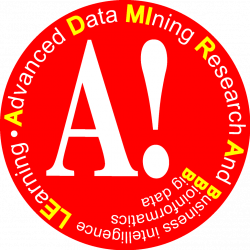2015
López, Carlos; Marticorena-Sánchez, Raúl; Díez-Pastor, José Francisco; García-Osorio, César
Acquisition of Transferable Skills Associated with Software Maintenance and Development Using Tools for Versioning and Task Management Journal Article
In: International Journal of Engineering Education, vol. 31, no. 3, pp. 839–850, 2015, ISSN: 0949-149X.
Abstract | BibTeX | Tags: Computer Science teaching, Organizational skills, Software configuration, Software engineering education, Transferable skills
@article{clopezno2015,
title = {Acquisition of Transferable Skills Associated with Software Maintenance and Development Using Tools for Versioning and Task Management},
author = {Carlos López and Raúl Marticorena-Sánchez and José Francisco Díez-Pastor and César García-Osorio},
issn = {0949-149X},
year = {2015},
date = {2015-01-01},
journal = {International Journal of Engineering Education},
volume = {31},
number = {3},
pages = {839–850},
abstract = {Tools for version control and task planning allow monitoring and collecting information on the software development and maintenance processes. This work describes the use of these types of tools in subject modules related to these fields. Instead of simply describing the tools as part of the subject content, the idea is to use them to promote and evaluate the acquisition of certain generic skills related to the subjects. After selecting the skills, this paper surveys the possible tools and their field of application at different levels of mastery, and concludes with an analysis of the impact of selected tools in the acquisition of those skills. This analysis was conducted through surveys of students from different courses in the knowledge area of software engineering.},
keywords = {Computer Science teaching, Organizational skills, Software configuration, Software engineering education, Transferable skills},
pubstate = {published},
tppubtype = {article}
}
Tools for version control and task planning allow monitoring and collecting information on the software development and maintenance processes. This work describes the use of these types of tools in subject modules related to these fields. Instead of simply describing the tools as part of the subject content, the idea is to use them to promote and evaluate the acquisition of certain generic skills related to the subjects. After selecting the skills, this paper surveys the possible tools and their field of application at different levels of mastery, and concludes with an analysis of the impact of selected tools in the acquisition of those skills. This analysis was conducted through surveys of students from different courses in the knowledge area of software engineering.

